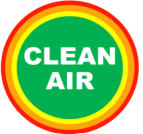
Coastal
Commission
Approves
Landmark
Changes
to
The
Oceano
Dunes
SVRA
Coastal Development Permit - OHV Groups File Lawsuits
On
March
18
2021
the
Coastal
Commission
conducted
a
public
hearing
to
review
SVRA
operations
and
to
consider
the
recommended
CDP
changes.
At
this
hearing
the
Commission
staff’s
presentation
made
a
compelling
case
for
why
off-highway
vehicle
operations
on
the
dunes
cannot
be
permitted
in
an
area
that
has
been
designated
as
an
Environmentally
Sensitive
Habitat
Area
(ESHA).
Almost
all
of
the
of
the
SVRA
riding
areas
are
within
a
designated
ESHA,
according
to
the
Coastal
Act
and
applicable
Local
Coastal
Plans.
By
an
10-0
vote,
the
Commission
approved
the
recommended
CDP
changes,
while
also
reducing
the
time-frame
for
phasing
out
off-highway
vehicle
operations
on
the
dunes
from
the
staff
recommended
five
years
to
three
years.
At
its
August
12
meeting,
the
Commission
approved
a
revised
staff
report
(click
here)
that
incorporates
the
shorter
phase
out
time-frame.
For
a
summary
of
the
approved CDP changes,
click here
.
Several
OHV
advocacy
groups,
including
Friends
of
Oceano
Dunes
(FoOD),
have
filed
multiple
lawsuits
aimed
at
preventing
the
Commission’s
decision
to
phase
out
OHV
activity
from
taking
effect.
On
December 17
State
Parks
and
FoOD
reached
agreement
with
the
Coastal
Commission
to
stay
the
imposition
of
three
provisions
of
the
revised
CDP.
This
agreement
temporarily
delays
closure
of
the
Pier
Avenue
entrance,
temporarily
allows
vehicles
to
cross
Arroyo
Grande
Creek
when
water
depth
is
less
than
12 inches,
and
temporarily
reduces
the
size
of
the
seasonal
Plover
Habitat
area.
This
agreement
was subsequently approved by the judge hearing the FoOD lawsuits.
=========================================================================================
Particulate Matter Exposure Linked to Higher Risk of COVID-19 Death
Harvard
University
researchers
recently
published
the
results
of
a
study
(
click
here)
on
the
effect
of
long-term
exposure
to
2.5
micrometer
particulate
matter
air
pollution
on
the
risk
of
dying
from
COVID-
19
infection.
They
found
that
the
majority
of
the
pre-existing
conditions
that
increase
the
risk
of
death
for
COVID-19
are
the
same
diseases
that
are
affected
by
long-term
exposure
to
air
pollution.
They
concluded
that
a
small
increase
in
long-term
exposure
to
PM2.5
leads
to
a
large
increase
in
COVID-19
death
rate.
The
study
results
underscore
the
importance
of
continuing
to
enforce
existing
air
pollution
regulations to protect human health both during and after the COVID-19 crisis.
=========================================================================================
State Parks Funded Study Report Asserts APCD’s Dune Dust Measurements
Exaggerate Health Risk - APCD and Scientific Advisory Group Counter
State
Parks
Off-Highway
Motor
Vehicle
Recreation
Division
is
sponsoring
a
multi-year
study
of
the
particulate
matter
emissions
from
the
Oceano
Dunes
SVRA.
The
study
has
been
conducted
by
Professor
Lynn
M.
Russell
of
the
Scripps
Institute
of
Oceanography.
On
November
8,
2021
Professor
Russell
issued
an
interim
report
to
State
Parks
that
describes
the
findings
of
sampling
and
analyses
conducted
in
the
Spring
of
2021.
(
See
the
Scripps
report.
)
The
report
asserts
that
the
particulate
matter
at
the
CDF
monitor
on
windy
days
was
found
to
consist
of
14%
mineral
dust
on
average.
Specifically,
for
May
2021,
the
mineral
dust
fraction
ranged
from
2%
to
32%
on
high-PM10
days.
According
to
the
report,
“The
remaining
82%
of
the
PM10
is
likely
from
atmospheric
water,
organic
components,
ammonium,
nitrate,
non-sea-salt
sulfate,
and
other
semi-volatile
chemical
species.”
Based
on
this
thinking,
Professor
Russell
brings
into
question
the
validity
of
the
concern
that
the
particulate
matter
concentrations
measured by the Air Pollution Control District’s Cal Fire monitor represents a serious public health risk.
Further,
because
the
Scripps
study
did
not
find
a
significant
difference
between
weekday
and
weekend
dune
dust
concentrations,
it
concluded
that
the
mineral
dust
component
of
the
dune
dust
is
natural
and not related to off-highway vehicle riding on the dunes.
The
Air
Pollution
Control
District
(APCD)
and
the
Scientific
Advisory
Group
(SAG)
have
each
responded
with
detailed
and
specific
criticisms
of
the
Scripps
study
methods
and
conclusions.
They
point
out
that
the
apparatus
used
and
analysis
methods
used
by
Scripps
study
do
not
conform
to
EPA
guidelines
and
can
produce
inaccurate
results.
The
APCD
states
that
its
measurements
and
assessment
methods
do
conform
to
these
guidelines,
and
that
its
own
analysis
of
the
dune
dust
are
in
close
agreement
with
the
Cal Fire monitor data. (
See the APCD comments.
)
The
APCD
also
clarifies
that
sand
thrown
up
by
vehicle
tires
and
vehicle
exhaust
fumes
are
not
the
primary
source
of
the
particulate
matter
concentrations
measured
at
the
CDF
monitor,
but
are
the
result of the long-term effects of OHV activity.
The
SAG
response
states:
“In
summary,
the
SAG
expresses
strong
concerns
about
the
accuracy
of
some
of
the
results
and
questionable
interpretations
put
forth
by
the
Scripps
report,
which
confound
understanding
of
the
mechanisms
and
sources
of
PM10
dust
emitted
from
ODSVRA
and
dispersed
to
local monitoring stations.” (
See the SAG comments.
)
Mesa Air Facts!





NEWS PAGE 2







